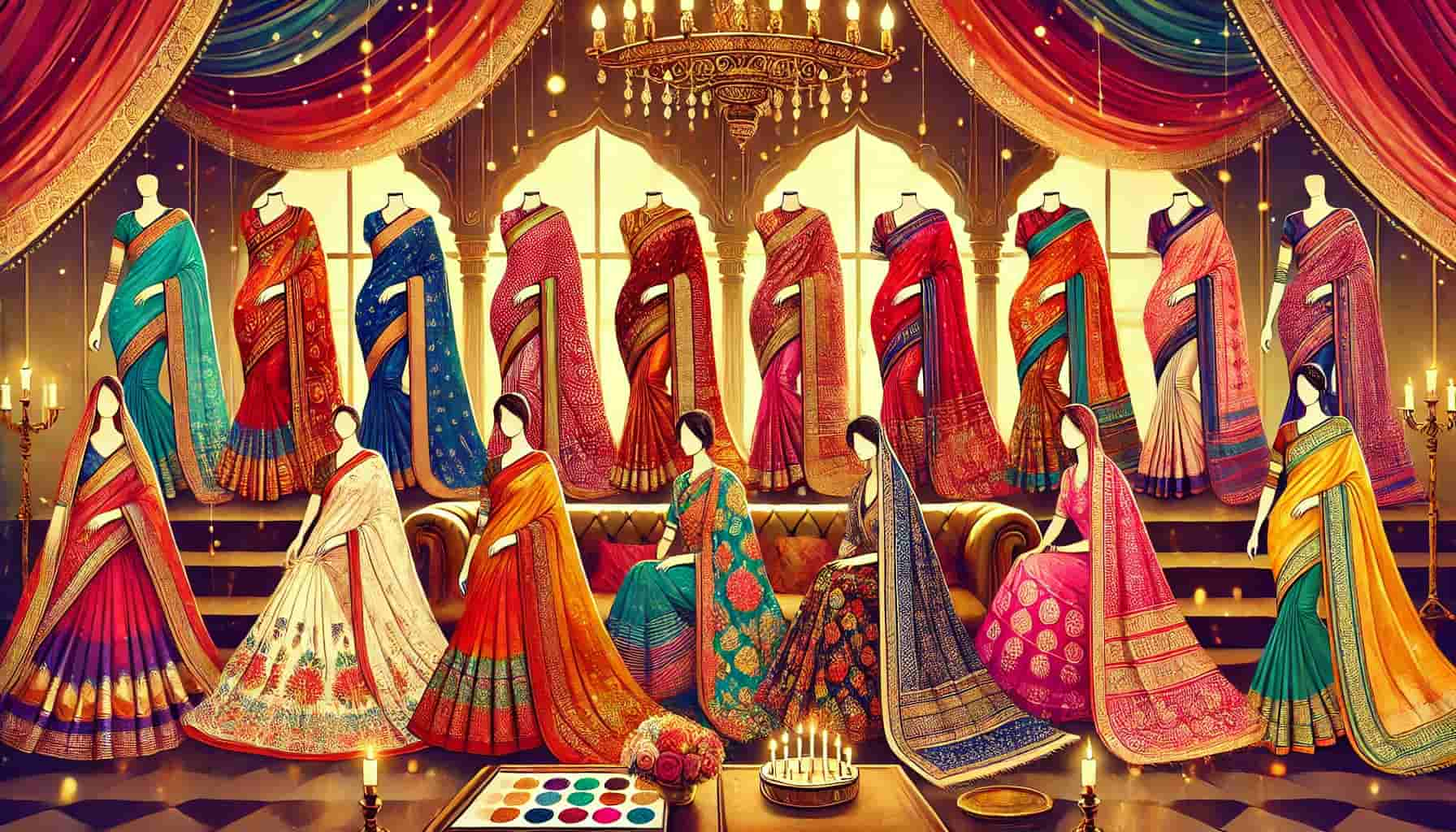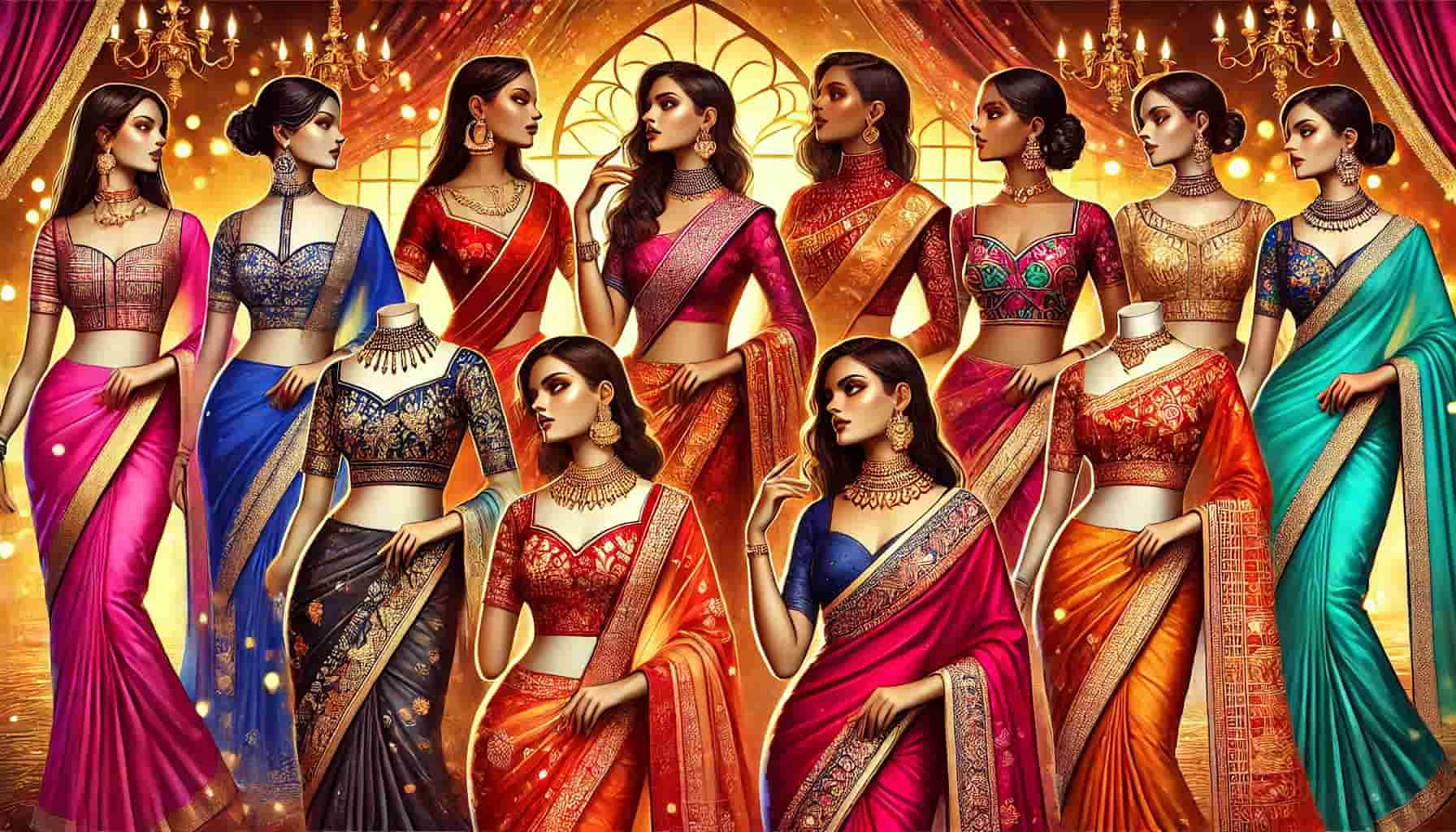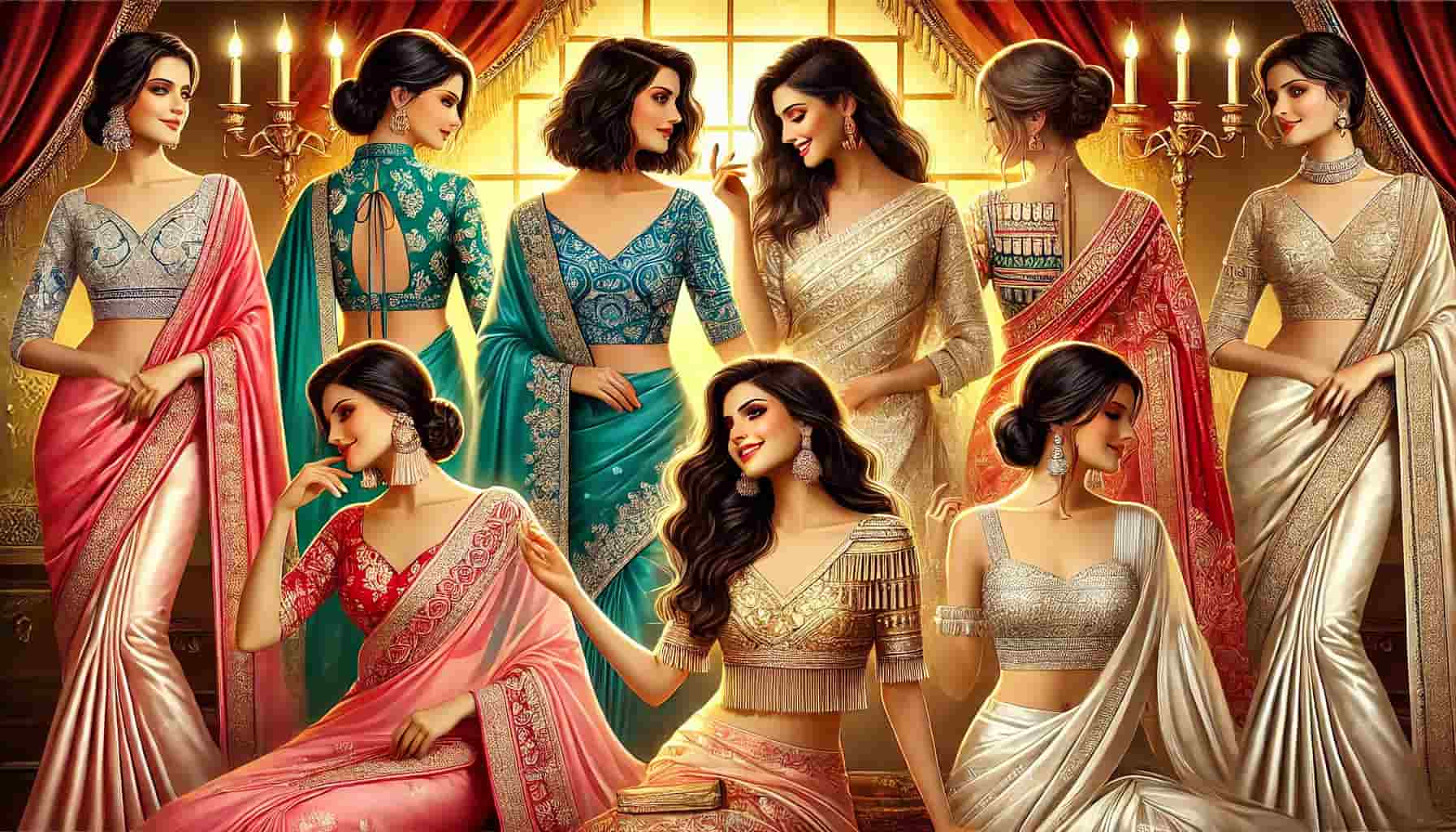
10 Different Types of Handloom Sarees You Must Know
Handloom sarees are a testament to India’s rich cultural heritage and artisanal craftsmanship. Each type of handloom saree tells a unique story through its weaves, motifs, and textures, reflecting the diverse traditions of different regions. In this blog, we delve into 10 different types of handloom sarees that you must know about, celebrating the intricate artistry and timeless elegance of these traditional garments.
What is a Handloom Saree?
A handloom saree is a traditional Indian saree woven by hand on a loom. Handloom sarees are known for their exquisite craftsmanship and the unique, intricate designs that are often inspired by local traditions and cultures. The art of weaving handloom sarees has been passed down through generations, with each region of India offering its distinct style and techniques. These sarees are often made using natural fibers like cotton, silk, and wool, and they embody the rich cultural heritage and artisanal skills of the weavers.
Key Characteristics of Handloom Sarees:
- Handwoven: Made using traditional handloom techniques without the use of machinery.
- Natural Fibers: Typically woven from natural materials such as cotton, silk, and wool.
- Unique Designs: Feature intricate patterns and motifs that reflect regional cultures and traditions.
- Eco-Friendly: Often produced with minimal environmental impact, using sustainable practices.
Types of Handloom Sarees
1. Banarasi Sarees
Banarasi sarees are renowned for their opulent texture and intricate gold and silver brocade work. Originating from Varanasi (Banaras), these sarees are a must-have for bridal trousseaus and special occasions. The elaborate patterns often include floral and foliate motifs, kalga and bel, and a string of leaves called jhallar at the outer edge.
Unique Features:
- Made from finely woven silk.
- Intricate designs with zari (gold or silver threads).
- Often feature Mughal-inspired motifs like floral and foliate designs.
2. Kanchipuram Sarees
Kanchipuram sarees, also known as Kanjeevaram sarees, hail from Tamil Nadu. These sarees are famous for their durability and the contrasting vibrant colors used in the body and pallu. They are woven from pure mulberry silk, and the borders are often woven with pure gold and silver threads.
Unique Features:
- Heavy silk fabric with a lustrous finish.
- Contrasting borders with intricate designs.
- Durable and long-lasting, making them perfect for weddings and grand occasions.
3. Chanderi Sarees
Chanderi sarees are produced in the Chanderi town of Madhya Pradesh. They are known for their lightweight and sheer texture. Made from a blend of silk, cotton, and zari, these sarees are perfect for summer and are often adorned with traditional coin, floral, and peacock motifs.
Unique Features:
- Lightweight and sheer fabric.
- Often feature traditional motifs like coins, flowers, and peacocks.
- Perfect for festive occasions and formal events.
4. Tussar Sarees
Tussar sarees are made from Tussar silk, a type of wild silk produced mainly in the states of Jharkhand and Bihar. These sarees have a natural golden sheen and are often adorned with natural motifs and tribal designs.
Unique Features:
- Distinctive natural golden color.
- Rich texture with tribal and natural motifs.
- Eco-friendly and biodegradable.
5. Jamdani Sarees
Jamdani sarees are a symbol of Bangladesh's rich textile heritage, now also woven in West Bengal. These sarees are characterized by their fine muslin fabric and intricate floral and geometric patterns woven into the fabric.
Unique Features:
- Fine muslin fabric with intricate designs.
- Traditional motifs often include flowers and geometric shapes.
- Lightweight and comfortable.
6. Patola Sarees
Patola sarees are double ikat woven sarees made in Patan, Gujarat. They are known for their vibrant colors and intricate patterns, which are identical on both sides of the fabric. These sarees are a symbol of luxury and were once worn only by aristocrats and royalty.
Unique Features:
- Double ikat weave with identical patterns on both sides.
- Vibrant colors and intricate geometric and floral designs.
- Highly durable and often considered a family heirloom.
7. Sambalpuri Sarees
Sambalpuri sarees come from the Sambalpur region of Odisha. These sarees are known for their traditional motifs like shankha (shell), chakra (wheel), and phula (flower), woven into the fabric using the tie-dye technique.
Unique Features:
- Unique tie-dye technique called Bandha.
- Traditional motifs like shankha, chakra, and phula.
- Vibrant colors and durable fabric.
8. Pochampally Sarees
Pochampally sarees originate from the Bhoodan Pochampally region of Telangana. They are known for their geometric patterns and vibrant colors, created using the ikat dyeing technique.
Unique Features:
- Ikat dyeing technique with geometric patterns.
- Bright and vibrant colors.
- Soft and comfortable fabric.
9. Bhagalpuri Sarees
Bhagalpuri sarees, also known as Tussar silk sarees, come from Bhagalpur, Bihar. These sarees are known for their unique texture and natural feel, often adorned with hand-painted motifs and designs.
Unique Features:
- Made from Tussar silk with a natural texture.
- Hand-painted motifs and designs.
- Lightweight and comfortable.
10. Paithani Sarees
Paithani sarees are handwoven silk sarees from Maharashtra, known for their vibrant colors and intricate designs, especially the peacock motif. The pallu of Paithani sarees often features elaborate motifs in gold and silk threads.
Unique Features:
- Rich silk fabric with vibrant colors.
- Intricate designs, often featuring peacock motifs.
- Elaborate pallu with gold and silk threads.
Conclusion
Handloom sarees are not just garments; they are works of art that represent the rich cultural heritage and artisanal skills of India. Each type of handloom saree has its unique charm and significance, making it a valuable addition to any wardrobe. Whether you are attending a wedding, a festive celebration, or a formal event, there is a handloom saree for every occasion.
FAQs
Q1: What are handloom sarees?
A: Handloom sarees are traditional sarees woven by hand on a loom. They are known for their unique designs, rich textures, and cultural significance.
Q2: Which is the most popular handloom saree in India?
A: Banarasi and Kanchipuram sarees are among the most popular handloom sarees in India, known for their luxurious texture and intricate designs.
Q3: How can I identify a genuine handloom saree?
A: Genuine handloom sarees often have minor imperfections, which add to their charm. Look for the handloom mark and the quality of the fabric and weaving.
Q4: What makes handloom sarees special?
A: Handloom sarees are special because they are crafted by skilled artisans using traditional techniques. Each saree is unique and represents the rich cultural heritage of its region.
Q5: Are handloom sarees suitable for all occasions?
A: Yes, handloom sarees come in various styles and fabrics, making them suitable for weddings, festive celebrations, formal events, and even everyday wear.



Leave a comment
यह साइट hCaptcha से सुरक्षित है और hCaptcha से जुड़ी गोपनीयता नीति और सेवा की शर्तें लागू होती हैं.